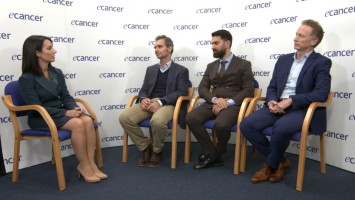I think it is important that we always keep in mind that we are in an area of research that is evolving and is evolving very fast. So there is no such thing as the magic solution or the magic bullet and we need to tackle problems as they arise. If we keep as the north star, the guiding light, the perspective and the point of view of the patient, that will help us a lot to make progress in this area.
What are the promises and pitfalls associated with biomarker driven clinical trials?
I will start with the pitfalls. The pitfalls have to do with the fact, like I said before, that this is an area that is evolving and is evolving very fast. So there are still some traditional, or you can say older, models of tackling the biomarker issue that might actually have impaired progress. What I am referring to is the existence of individual tests linked to individual drugs when we all know that there are entire classes of compounds that can be benefitting for a particular biomarker or for a particular class of biomarkers.
The second pitfall that is very important that we keep in mind is that the history of cancer research and cancer treatment teaches us that going with a single drug to solve a single pathological problem is not going to be likely of definitive success. Combination therapies, sequential approaches, things that actually keep in mind that the tumours mutate and evolve with time, will certainly be of importance in going to offer the best therapeutic and diagnostic approach for our patients.
Now, one thing that I think is a promise is actually based upon recent and current experiences that are occurring in this area. What, in my experience, has been possible holds great promise. So I’ll tell you about certain things that have been made and that are possible and they are possible today.
First of all, it is possible to get together multiple sponsors with different companies and different drugs and different diagnostic tools on the same type of project, on the same type of clinical trial. This has taken some time; usually it takes time to put in agreement the lawyers of the various companies. But in my career we have been the first group to show that that was possible, collaborating with another company, providing a combination of targeted agents and a checkpoint inhibitor for the first time in history.
The second thing, it is possible to rapidly profile the tumours of the patients. When I say rapidly I mean even in less than a week, and give this information to the treating physicians and the researchers in real time. The BIT AML experience that I’m talking about at the IBCD meeting is one of these examples.
The third thing, it is possible to go with experimental therapies in patients who have not received prior treatment. Now, this is very important because we will never appreciate and assess the full value of the new treatments that we are developing unless we tackle less advanced diseases and stages of disease where the benefit can be maximised for our patients.
The fourth thing that is possible, it is possible to provide experimental combinations early in the game, early in the clinical development of new therapies. Once again, it is through combinations that we are likely to achieve the best therapeutic results for our patients.
Finally, it is possible to offer to every single patient that agrees to enter a clinical trial an appropriate therapy, whether the patient’s tumour presents a target that can be treated with new or with an existing drug, or whether they don’t have this type of target. Still there is room to offer these patients experimental therapies and experimental therapies in many situations in oncology still represent an optimal status of treatment for these patients.
What does the future of biomarker driven trials look like?
It is obvious to me and to a lot of colleagues that the future will see more and more and more of what we call segmentation of the population of patients that we treat. That means that individual groups of tumours with individual characteristics will be discovered and isolated, even within the conditional histological group of diagnostic approaches. That means there will be fewer patients available for clinical trial and in order to reach the appropriate number of patients needed to conduct a complete clinical trial there will be more need for larger cooperation, even at the international level.
So cooperation and cooperation among companies and sponsors; cooperation among investigators; cooperation among regulatory agencies and cooperation among diagnostic companies, that is what the future will be about. Again, in this scenario, I believe, and that will be part of my presentation at the IBCD, that the role of the advocacy community will be tremendous in facilitating all these cooperations.
Is there anything you would like to add?
I think that we should never refrain from asking questions that are relevant for the progress of therapies of our patients.








